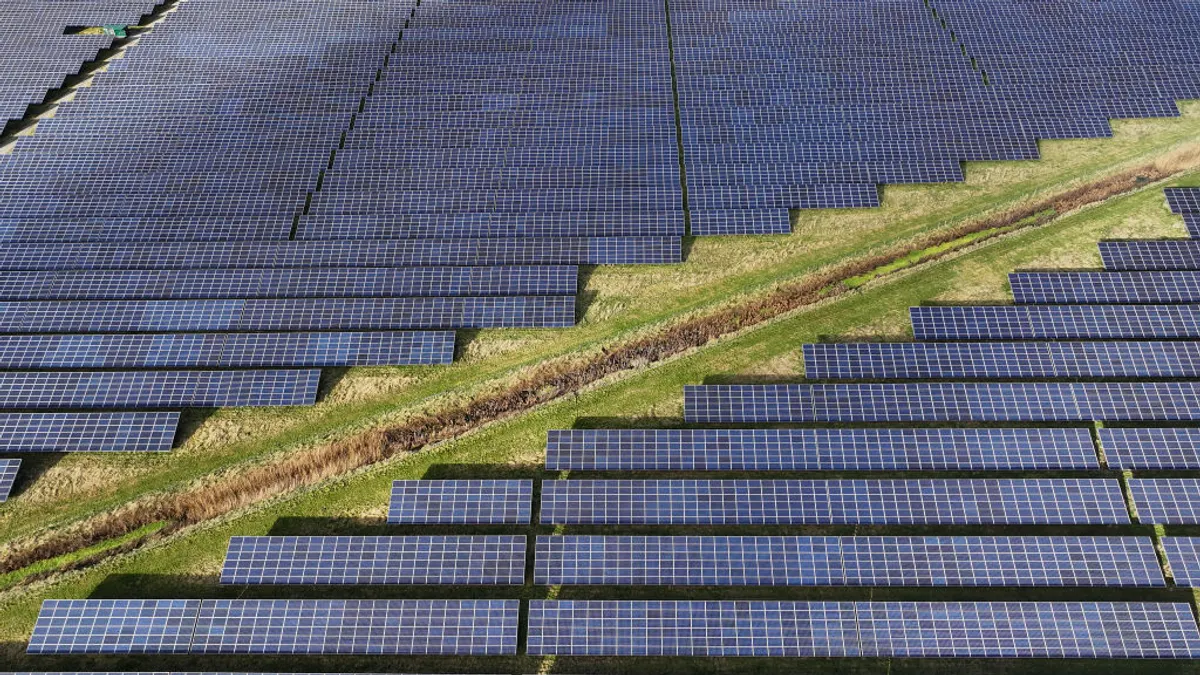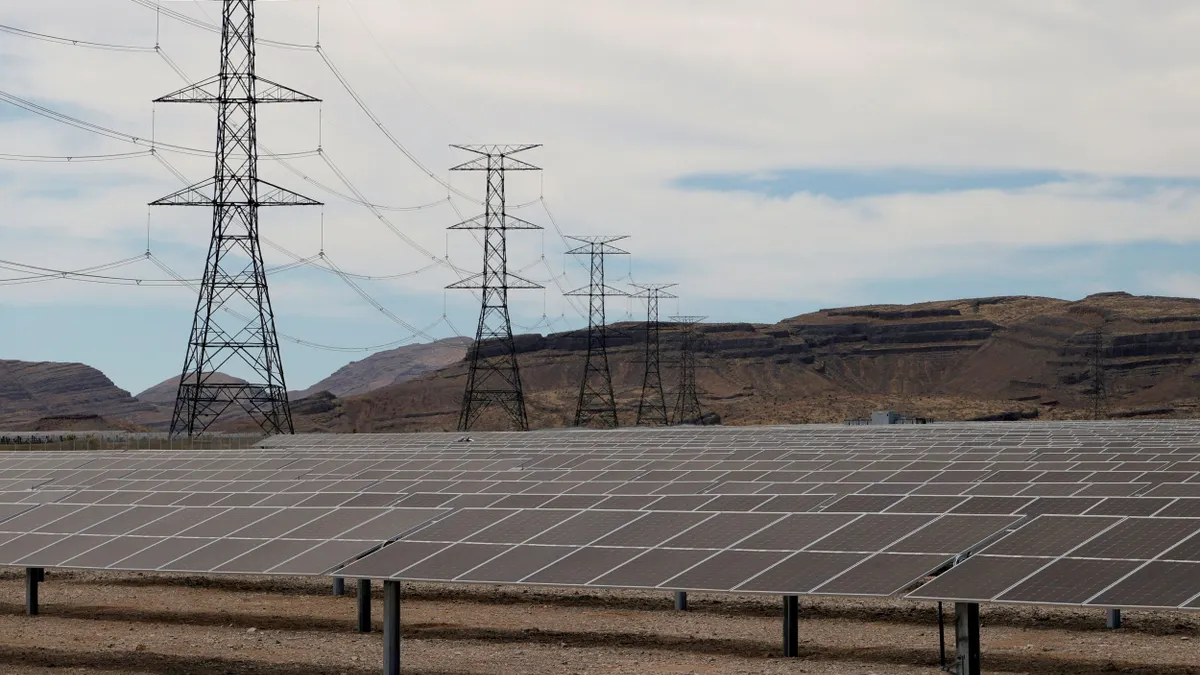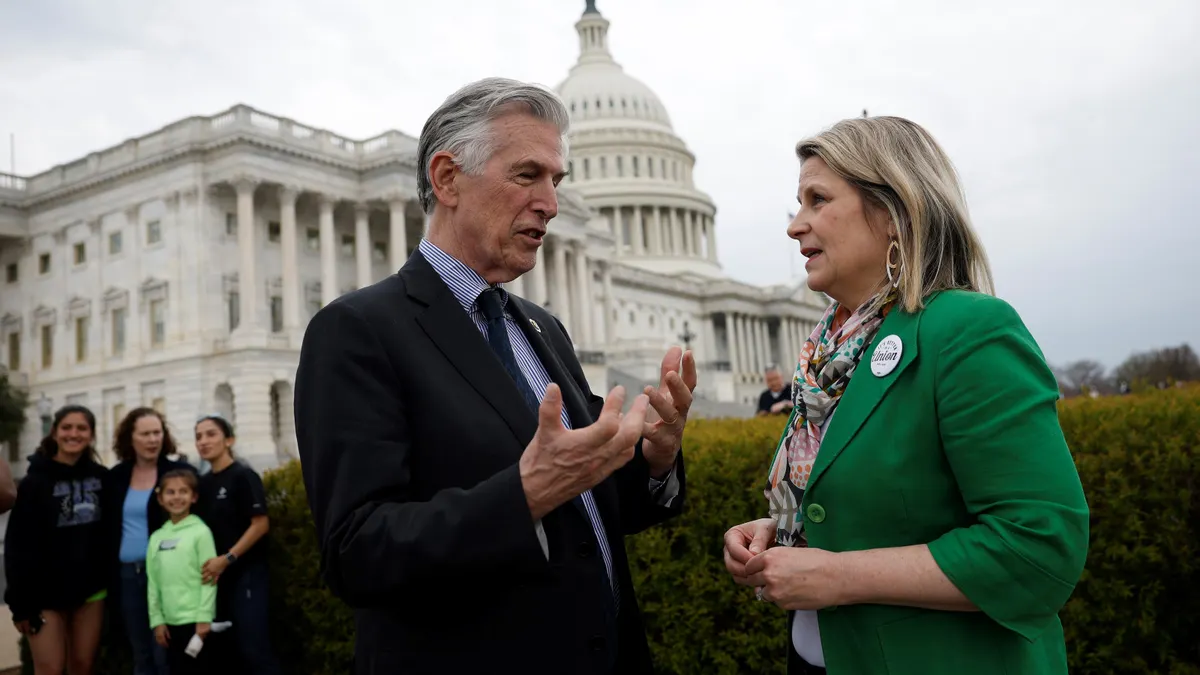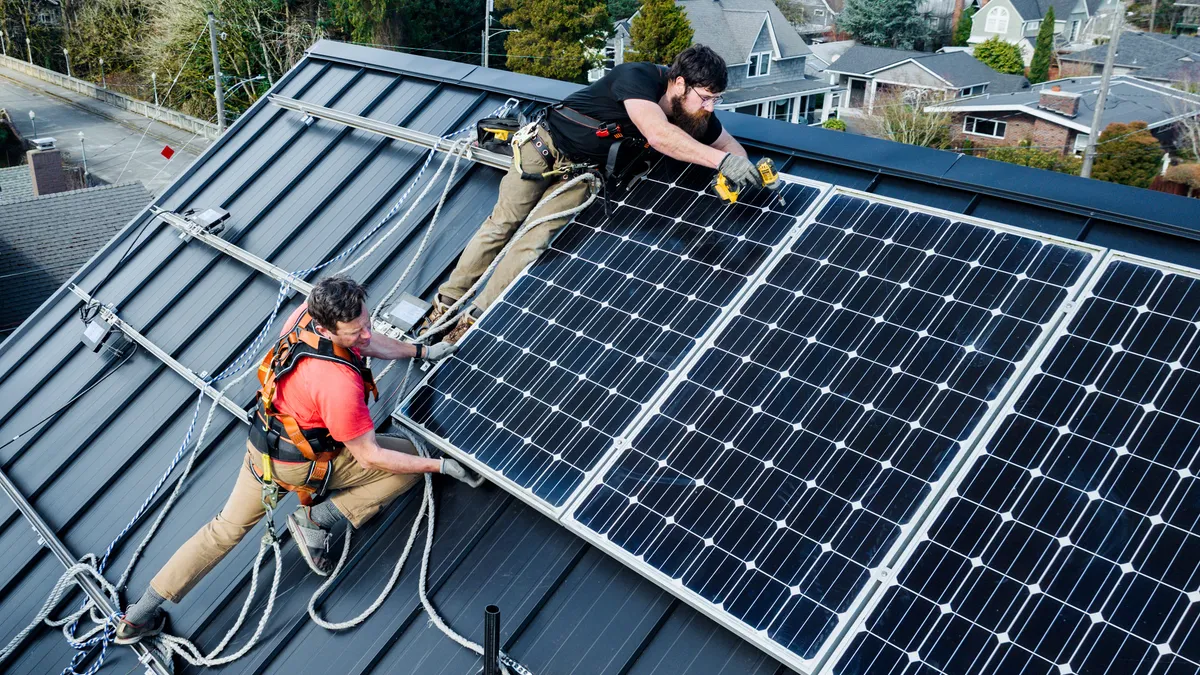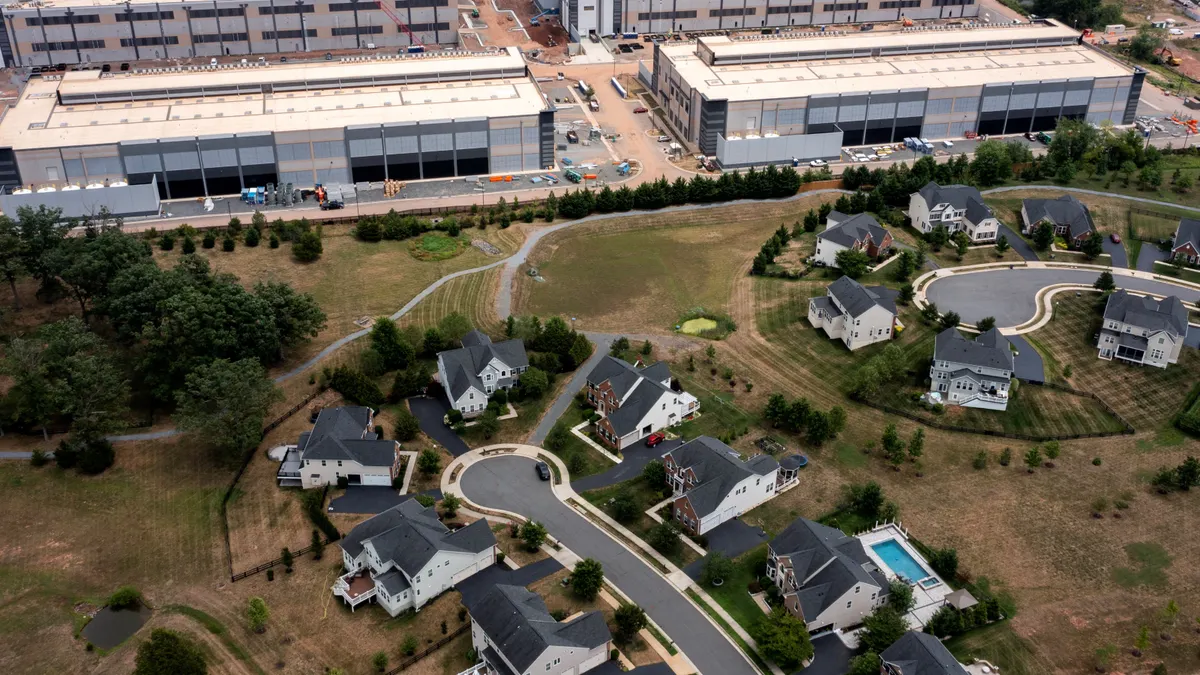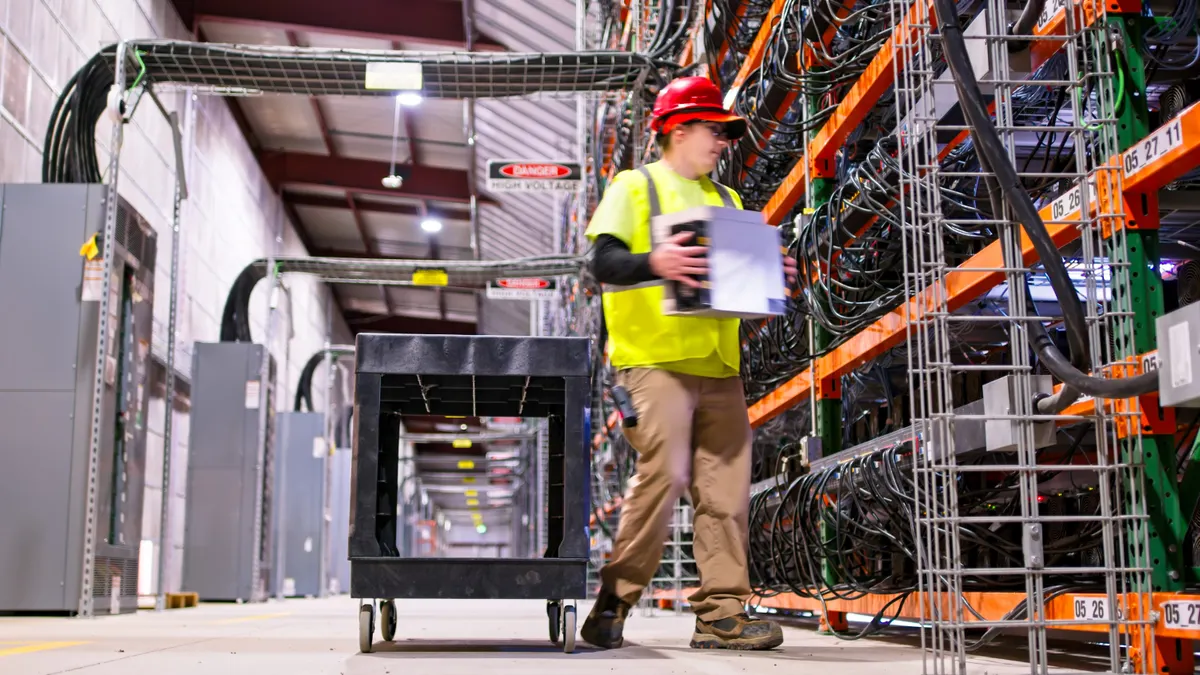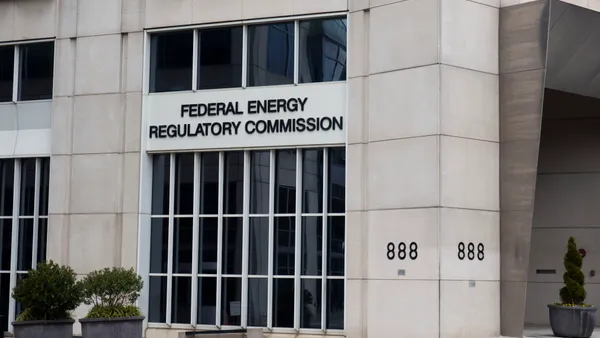The Atlantic hurricane season began Monday, and the National Oceanic and Atmospheric Administration says it is anticipating a "busy" six months. Regardless of the number of storms, electric utilities will face additional challenges as they work to restore power while also dealing with the impacts of a global pandemic.
Up and down the East Coast, power companies have developed new storm response protocols that take into account physical distancing recommendations, avoid large groupings of workers, provide medical testing, and harness new ways of operating supply chains.
Myriad changes include new approaches to remote work, lodging utility workers, health screenings, and even how food is delivered to crews. Utility officials say some of these — in particular, changes to supply chain protocols — could wind up being new best practices, though it is too soon to tell.
"So much of our continuity planning in this industry actually is rooted in pandemic," said Scott Aaronson, vice president of security and preparedness at the Edison Electric Institute (EEI), which represents investor-owned utilities.
Over the past two decades, the electric sector has watched SARS, H1N1 and other health threats with the potential to complicate disaster responses. While those outbreaks did not have the widespread impact of the novel coronavirus, experts say they laid the groundwork for the utility sector's response and have helped the industry find its footing.
"Those were all potential threats that actually presented really interesting thought exercises," Aaronson said during a media call last week to discuss the industry's approach to COVID-19 and storm season. "It turned out though, that when a pandemic actually happened, the details matter."
In the case of COVID-19, Aaronson said the power sector must cope with a virus that is highly contagious — though carriers may be asymptomatic for up to 10 days. That ramps up the threat to the thousands of utility workers who show up to restore power after a storm, and who have historically worked in close proximity.
"So those details dictate the operational protections that you have to put in place. It dictates personal protective equipment we're going to need to have. It dictates some of those protocols we're going to need to adhere to," he said.
In the early days of the COVID-19 pandemic, EEI and its member companies developed a resource guide through the Electricity Subsector Coordinating Council to lay out processes utilities would use to keep workers safe while restoring power in an emergency.
The sector is "literally writing the book on the COVID-19 response as we live it," said Aaronson.
Utilities are now taking those recommendations and integrating them into their own processes, resulting in major changes to how they approach storm restoration.
Utilities are testing workers for COVID-19
Electric utilities are screening and testing workers engaged in storm response, though there are varying approaches.
The Centers for Disease Control and Prevention considers a fever of at least 100.4 degrees Fahrenheit to be a symptom, but Dominion Energy has tightened that criteria. Employees are requested to check their temperatures at home before they come to work and all office locations are equipped to take temperatures at least once per day. Anyone with a temperature above 99.6 degrees is sent home.
Any employee who has a temperature "will notify their supervisor, and they would immediately go home," Dominion Director of Distribution Operations Centers and Emergency Preparedness Alan Bradshaw told Utility Dive. "Our leadership team will then follow up, to see if they have other symptoms. ... We've been very conservative in keeping folks who exhibit symptoms away from others."
Even during a storm response, Dominion's goal is to have all workers go through a daily screening and temperature check, including any mutual assistance crews that may be supporting restoration. The utility also has a vendor that can perform COVID-19 testing for employees who may present with symptoms both during daily operations and storm responses.
Florida Power & Light has developed "an ongoing testing procedure" where crews are monitored daily, said FPL spokesman Bill Orlove.
"We have nurse stations or medical facilities at all of our staging sites," said Orlove. "We will have medical personnel at each staffing site." The utility says it is administering screening and temperature checks at corporate facilities as well as staging areas, as well as testing employees in critical storm response functions.
If a worker fails a temperature test, Orlove said they will be quarantined in a parking area, and further evaluation will be performed. The worker will receive a second temperature test and further evaluation the next day.
"If they fail [the second test], they will not be authorized to work," Orlove said in an email. "Responsible parties, including the site incident command staff, will be notified."
Duke Energy says it has contracts with testing facilities that can be deployed to worker staging sites, and is making resources available both in areas where crews are deployed as well as when they return home.
"We do screenings on the front end to make sure employees are not symptomatic," said Duke spokesperson Jeff Brooks. “We also work to manage work groups in the field and limit who those employee groups come into contact with.”
Southern Company is asking all workers to do pre-work self screenings, said Stan Connally, executive vice president of operations for Southern Company Services.
"We'll be asking them to do frequent on-the-job self screenings, and in any case workers raise their hand and say they may have a symptom, we're going to remove them from the workforce and get them the health care they need," said Connally. "And if needed, trace out who else they worked with."
At community-owned Jacksonville Energy Authority, the utility has partnered with the Mayo Clinic to test workers for COVID-19, according to spokesperson Gina Kyle. And each day the company sends out an internal report noting the number of tests and cases.
"We have an arrangement in testing locations specific to JEA that allows us to get test results back quickly," said Kyle. "We're also taking temperatures, and encouraging workers to stay home if they feel ill."
Changes to worker lodging, food
To respond to major storm damage, EEI's mutual assistance network can muster thousands of utility workers across multiple states — typically housing and feeding them in large staging camps.
"Our industry has a long history of assembling large workforces to response to hurricanes," said Connally. "One of the big changes is a more dispersed workforce. We want to break those large base camps up into smaller staging areas."
Breaking up base camps, said Connally, can minimize the number of workers close together and reduce the risk of virus transmission. That may mean utilizing hotels, where Southern will lodge workers in single rooms, rather than two to a room.
It is too soon to tell the impacts of dispersed base camps on storm recovery. Connally said the approach may create logistical issues in delivering equipment to more places.
"At the same time, we may be seeing some advantages to doing that, for instance getting material distributed out across the network may prove to be a solution that provides us some advantages in terms of restoration times," Connally said. "So while you may say there are additional complications and logistics challenges with the COVID protocols, at the same time we may find some advantages in our restoration efforts."
Dominion has made similar adjustments.
"Processing and staging centers will be much smaller and we'll probably have more of them," said Bradshaw. "Meals used to be a buffet line, but that doesn't work anymore. Meals will be boxed and distributed to an area where folks can spread out and eat."
Dominion may also more heavily leverage restaurants doing curb service and delivery, Bradshaw said, to help support local economies and help maintain social distancing among utility workers.
Duke will be utilizing small traveling crews and work groups, said Brooks.
"A typical image of storm response is a convoy of 15 to 20 trucks," he said. "Breaking those up can help maintain social distancing."
To feed crews, Duke is also utilizing a drive-thru meal service as opposed to a large tent where typically the utility could feed 2,000 people. The utility is also reducing room occupancies for workers, considering booking entire hotel floors to minimize interaction with the public, and looking at non-traditional sleep quarters such as gyms and unused commercial sites.
One of the big challenges of coronavirus, said Brooks, "is how to manage the large deployment of resources from out of state that come in to help."
FPL is developing "micro sites" to stage workers with fewer trucks and equipment, said Orlove. While this will reduce the risk of virus transmission, he said it may also wind up slowing recovery.
"This may slow that process down because we will have more staging sites spread out in various areas," said Orlove. "They may need more time to get to hardest hit areas."
Going virtual: Assessments, work orders
New utility protocols have been put in place across entire workflows, ranging from changes to seating charts to new ways of utilizing drone reconnaissance.
Dominion has three distribution system operating centers in Virginia, and Bradshaw said the utility has created three additional satellite centers around the state to decentralize its operations.
"That's allowed us to have a lot more spacing at each of our centers, organically creating social distancing," said Bradshaw. And the company has allowed some work that previously was always done inside an operations center to be done from home.
Dominion has also changed how it assigns seating in an operations center. "Nobody comes in to report to their shift, and will sit in the same seat someone else was in during a previous shift," said Bradshaw.
For Duke, damage assessment typically involves a two-person crew traveling together. Damage assessors will now travel one to a vehicle, said Brooks, with another working remotely to document findings.
"We've found that the combination of people in the field along with a virtual support system has worked very effectively and is also scalable," said Brooks.
Other utilities are also changing how workers get to sites and interact with the public.
JEA is now deploying trucks from utility worker homes, said Kyle. "Usually they would come into the office to receive whatever work they need to do," she said. "Now we are dispatching so they can leave from home."
JEA has also created signs it places around crews when they are working, reminding customers to keep their distance, and has also been using social media to issue reminders. "We've learned we can adapt and still serve the people of Jacksonville effectively," said Kyle.
Utility innovations extend to new uses of emerging technology, as well.
FPL has received a waiver from the Federal Aviation Administration for a novel use of drones for damage assessment.
Called a "drone in a box," the utility has installed two unmanned aircraft in structures designed to withstand winds of up to 150 mph. The drones are pre-programmed to capture images of certain equipment two miles past an operator's line of site.
"They're able to go out very quickly and give us a bird's eye view of what our equipment looks like," said Orlove.






